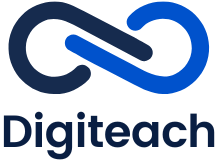Mobile applications have become a crucial aspect of our lives in the current digital age. We use mobile apps for a variety of things, including productivity, entertainment, and communication. This blog article is your ultimate resource whether you have a ground-breaking idea for an app or want to pursue a career in mobile app development. We’ll go over the necessary procedures, important factors, and best practices for creating productive mobile apps.
Define Your App’s Purpose and Target Audience
Before diving into development, it’s crucial to clearly define the purpose of your app. Identify the problem it solves or the value it offers to users. Conduct thorough market research to understand your target audience, their needs, and preferences. This information will guide your development process and ensure your app resonates with its intended users.
Sketch and Plan Your App
Creating a visual representation of your app through sketches and wireframes helps you conceptualize its structure and flow. Start with a basic outline of screens and functionalities, then gradually refine and expand upon it. This process will give you a clear vision of the user interface and user experience (UI/UX) of your app.
Choose the Right Platform and Technology
Deciding whether to develop a native, hybrid, or web app depends on your target audience, budget, and time constraints. Native apps offer superior performance and user experience but require separate development for each platform (e.g., iOS and Android). Hybrid apps, developed using frameworks like React Native or Flutter, provide a balance between performance and development efficiency. Web apps, accessible through browsers, are an option if your app doesn’t require device-specific features.
Design an Intuitive User Interface
A well-designed UI is crucial for engaging users and ensuring a seamless experience. Focus on simplicity, consistency, and visual appeal. Use intuitive navigation, recognizable icons, and concise text. Pay attention to color schemes, typography, and spacing. Conduct usability testing and gather feedback to refine your design further.
Develop and Test
The development phase involves coding your app’s features and integrating APIs, databases, and third-party services. Depending on your chosen platform and technology, familiarize yourself with the relevant programming languages (e.g., Java, Kotlin, Swift) and development frameworks. Follow coding best practices, modularize your code, and use version control systems like Git.
Thoroughly test your app on various devices, operating systems, and screen sizes to ensure compatibility and identify any bugs or performance issues. Implement automated testing frameworks and consider beta testing with a small group of users to gather feedback and make necessary improvements.
Integrate Analytics and Feedback Mechanisms
To continuously improve your app, integrate analytics tools to track user behavior, engagement, and other key metrics. Analyze this data to identify areas for enhancement. Additionally, provide users with a feedback mechanism, such as in-app surveys or customer support channels, to gather their opinions and address their concerns promptly.
Deploy and Optimize
Prepare your app for deployment by creating developer accounts on relevant app stores (e.g., Apple App Store, Google Play Store). Adhere to the guidelines and policies of each platform to ensure your app meets their requirements. Optimize your app’s metadata, including title, description, and keywords, to improve discoverability.
Maintain and Update
Once your app is live, ongoing maintenance and updates are crucial for its success. Monitor user feedback, fix bugs, and implement new features based on user demand and industry trends. Regularly update your app to ensure compatibility with new operating system versions and to stay ahead of the competition.
Focus on Performance Optimization
Mobile app users have high expectations when it comes to performance. Optimize your app’s loading times, response times, and overall efficiency. Minimize network requests, compress images, and employ caching strategies to enhance performance. Conduct thorough performance testing to identify bottlenecks and optimize accordingly.
Prioritize Security
Security is paramount in today’s digital landscape. Implement robust security measures to protect user data and ensure secure communication with servers. Use encryption protocols, enforce secure authentication mechanisms, and regularly update your app with security patches to address any vulnerabilities.
Incorporate User Feedback
Listening to your users is crucial for app success. Pay attention to user feedback, reviews, and ratings. Use this information to identify areas for improvement, address user concerns, and prioritize feature requests. Engaging with your user community not only helps you enhance your app but also builds loyalty and a positive reputation.
Consider Monetization Strategies
If your app is intended to generate revenue, explore different monetization strategies. Options include in-app purchases, subscriptions, advertisements, or offering a freemium model. Research the preferences and behaviors of your target audience to determine the most suitable monetization approach for your app.
Implement Analytics and App Performance Monitoring
Integrating analytics tools allows you to gain insights into user behavior, retention rates, and engagement metrics. Utilize these analytics to make data-driven decisions, optimize user experience, and prioritize features based on user preferences. Additionally, implement app performance monitoring tools to proactively identify and resolve issues affecting the app’s stability and performance.
Stay Updated with Technology and Trends
The mobile app development landscape is continually evolving. Stay informed about emerging technologies, programming languages, and frameworks. Attend industry conferences, join developer communities, and explore online resources to stay updated. Embracing new technologies can enhance your app’s functionality, performance, and user experience.
Marketing and Promotion
Even the most innovative app needs effective marketing and promotion to reach its target audience. Develop a comprehensive marketing strategy that includes app store optimization (ASO), social media campaigns, content marketing, influencer collaborations, and targeted advertising. Building a strong online presence and leveraging various marketing channels will increase your app’s visibility and attract more users.
Localization
Consider localizing your app to reach a wider audience. If your target market extends beyond a single language or region, translating your app’s content and adapting it to different cultures can significantly enhance user engagement and adoption. Pay attention to language translations, date and time formats, currency symbols, and cultural sensitivities when localizing your app.
Usability Testing
Conduct thorough usability testing throughout the development process to ensure your app is intuitive and user-friendly. Involve real users in testing sessions to gather valuable feedback on the app’s navigation, features, and overall usability. This iterative approach allows you to identify pain points, address usability issues, and improve the overall user experience.
Seamless Onboarding
The onboarding experience sets the tone for how users perceive and engage with your app. Aim for a seamless onboarding process that quickly demonstrates the value of your app and guides users through its features and functionalities. Minimize friction by offering options for social media sign-in or pre-populating fields with default values.
Push Notifications and Personalization
Implement push notifications strategically to engage and retain users. Personalize notifications based on user preferences and behavior, delivering relevant and timely information. However, ensure you strike the right balance and avoid overwhelming users with excessive or irrelevant notifications.
Embrace User-Centric Iteration
Successful mobile apps are those that continuously evolve based on user feedback and data insights. Embrace an agile development approach that allows you to iterate and improve your app in small, incremental steps. Regularly analyze user behavior, performance metrics, and market trends to identify opportunities for enhancement and address user pain points promptly.
Foster a Community
Create avenues for users to interact with each other and with your team. Incorporate features such as in-app messaging, forums, or social media integration to foster a sense of community around your app. Encourage users to provide feedback, share their experiences, and engage in discussions. This not only enhances user engagement but also establishes a loyal user base.
Consider Offline Functionality
While connectivity has improved, users often find themselves in situations with limited or no internet access. Design your app to provide essential functionalities even in offline mode. Allow users to save data locally and synchronize it once they regain connectivity. This offline capability can greatly enhance the user experience and differentiate your app from competitors.
Continuous Optimization
Monitor app performance, user feedback, and market trends to identify areas for optimization and new feature development. Regularly update your app to fix bugs, address security vulnerabilities, and enhance its overall performance. Keep an eye on user ratings and reviews, actively respond to user feedback, and demonstrate your commitment to delivering an exceptional app experience.
The process of creating a mobile app is exciting and demands careful planning, ongoing learning, and a user-centric perspective. You may increase your chances of developing a mobile app that engages users, stands out in the competitive market, and enjoys long-term success by paying attention to these additional pointers. Keep in mind that the secret is to remain flexible, welcome criticism, and continually work to provide value to your users.






